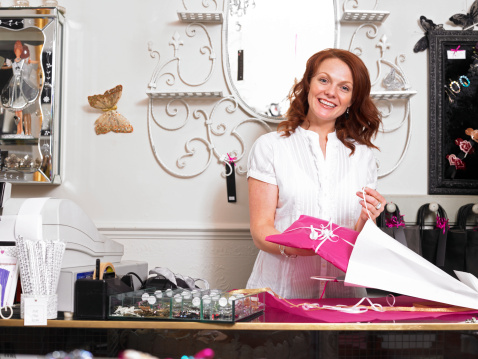By Lea Schneider
If you are consistently pushing your products, you might be only doing part of what you need to do to increase sales revenue. You hope people are in your retail store, finding what they need. But the real question is: are they finding what you think they need?
Five out of six Americans report that they make impulse purchases. According to a CreditCards.com survey, some 79 percent of those impulse purchases happened inside the store. If those stats transferred to your business, that means you could see a good percentage of your customers adding on to their original purchase.
Of course, those impulse purchases can happen all over the store—just like those chocolate chip cookies that made it into your cart but were not on your shopping list. However, next-to-the-register merchandise is only one percent of total retail space, but can account for seven percent of revenue.
For a number of years, I really enjoyed seeing what I could stash by the register at the flower shop where I worked. People came in to pick up a potted plant or a bouquet of flowers and would end up leaving with all kinds of things—bundles of plant labels, packets of seeds, poison ivy lotion, gardening magazines, small trinket boxes or terra cotta pot feet. None of these things were on their shopping list, but caught their eye at the checkout.
Small businesses can add to their bottom line by taking a close look at products available at their checkout line. Take a look at these three possible categories for gathering extra dollars at your register.
Bottled Drinks and Packaged Snacks
At my hair salon, they have a self-help cooler for cold drinks that does a good business. In addition, they have a snack basket filled with individually packaged chips, crackers, candy bars and nuts that you pay for using an honor system. Customers drop money into a jar and help themselves.
Everyone is hungry, no matter if you are in a hair salon, a florist shop or a bookstore. As a society, we are collectively in a hurry. Make it easier for your customers with a refrigerator full of drinks and a snack station. Being able to grab a cold bottle of water and a pack of peanut butter crackers may keep someone from making another stop at a different store. You may not be in the grocery business, but why shouldn’t you get the money?
Forgotten Items
What do your customers come back for because they forgot it the first time around? If you start to pay attention to that question, you’ll soon know which items you should move closer to the register. People buy wrapping paper and forget the tape. They buy shoes, but later wish they’d bought a second set of laces. And I think we’ve all had to head back to the store for batteries. Often customers will see an item, and it reminds them that they need it. Take advantage of this and place commonly forgotten items near the register.
Add-Ons
Think of these as small items customers didn’t know they wanted. There are several categories to draw from:
- Any small items for upcoming holidays or that is useful for a particular season. From sunscreen or jelly beans to holiday gift tags and apple-scented candles, there are a ton of items that match each season.
- Kid-friendly. It’s true we love to treat our kids and grandkids. Small toys, packets of candy or school supplies geared toward kids are easy to grab.
- Distinctive products. Unique items catch everyone’s eye. New or interesting items—maybe something you don’t see everywhere—will draw the customer in for a last-minute purchase.
Keep Impulse Buys in Mind
The other day, I was at a home decor shop. As I was checking out, the clerk asked if I’d like one of their $14.99 tote bags. As I was walking away, I heard the manager inquire as to how many customers were saying yes. The answer was about a third of people the clerk was offering it to. I was amazed, as it was more than just a few bucks.
According to business blog BrandonGraille.com, the primary reason why an impulse purchase is made is because it makes that person feel better, rather than because it’s a useful or necessary item. Keeping track of what sells well will help you determine what kinds of impulse purchases your customer base makes. Whether you add a refrigerator for last-minute beverages or a small jewelry display, what you keep in your checkout line can really make a difference in your revenue.
Lea Schneider owns her own small business and is a nationally recognized organizational expert. Lea writes about ideas of interest to small businesses for The Home Depot. To review a selection of refrigerators available at Home Depot, including commercial styles for your checkout line, you can visit the Home Depot website.







